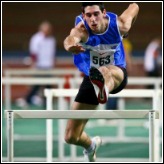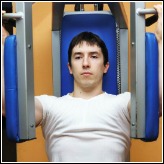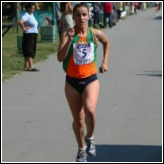Track
and Field Training Methods for Endurance Athletes
Track and field training methods for endurance are probably some of the most researched area in sport today. Because of this there are many proven training methods for endurance athletes.
In a good endurance training program every component of fitness should be catered for - yes even strength. You cannot attend only to those few fitness elements that have particular application to your event and expect performance improvements to be optimum. This neglect will ALWAYS catch you out sooner or later.
The sport of athletics is made up of over 20 individual events divided into 4 event groups comprising sprints, jumps, throws and endurance. For the most part the track and field training methods used to develop endurance qualities are different from those used to develop strength. Although, as you will see, some of the training methods used for endurance will be the same as those used in other events.
This article will provide you with a brief summary of the main track and field training methods which apply to endurance athletes and then show you how each method might be utilized in each of the other event groups.
Overview
Without the following overview some of what is to come might not make much sense, so here we go!
The body need fuel to perform exercise. The only fuel the body can utilize for this is a substance called ATP (Adenosine Tri-phosphate – 1 part adenosine and 3 part phosphate). A small amount of ATP (enough for about 6 second of maximal activity) is stored in the muscle cell and when a muscle is called into play, one of the phosphate molecules is liberated and energy is created for muscle contraction.
If exercise is to continue beyond six seconds, ATP must be continuously replenished. This replenishment is achieved in two ways – aerobically (with oxygen) and anaerobically (without oxygen).
Endurance athletes primarily make use of the aerobic energy system to manufacture the fuel they need for exercise. The system produces energy for muscular work in a climate that is rich in oxygen. This means that the exercise must be done at a tempo and intensity which allows the body the time it needs to replace the energy it has used, as it consumes it. The by-product of such training is carbon dioxide and water, which is expelled by the lung and through sweating.
One of the key training outcomes of endurance or aerobic training is to improve your VO2 max. This refers to your body’s ability to efficiently utilize the oxygen it extracts from the air you take into your lung. As your VO2 max improves and the velocity at which VO2 max can be maintained, so should your performance.
The following are the main track and field training methods that are used by endurance athletes to improve their performances.
Continuous training methods
One of the methods used to improve your VO2 max is to train at a prescribed pace for an extended period of time without a breaks. This track and field training method is call continuous running or the continuous method for training VO2 max. The total volume of a training session will vary from event to event but can be between 5 and 20 miles. The intensity of the run is set at a percentage of your VO2 max (normally 65-75%).
Fartlek training methods
Fartlek training is another track and field training method use by the endurance fraternity to improve aerobic fitness and VO2 max. This method is sometimes called speed play. Training is organized so that the training distance, say 5 miles, is completed with short burst of steady state running mixed with varying higher and lower tempo runs.
Interval training methods
Interval training (meaning pause or rest) is training that take a large overall volume of training and split it into smaller more manageable units of work. The real key to interval work as it is applied to endurance athletes is that it allows you to train at your competition distance but at a higher intensity. The rest between one interval and the next is incomplete so the athlete is never fully recovered. The interval therefore is there simply to link the various parts of the training volume.
For example an 800m runner might have training session with a volume of 3,200m. They design a session of several sets of 2 x 400m in 55 seconds (they could never run 3200m continuously in 55 seconds laps). Each 400m might have a 2 minutes pause between each repetition. This allows for the planned volume of work to be completed. The progression of this type of session might be to lower the recovery time between each of the paired 400m over successive weeks, until the pause between the two theoretically would not exist.
Circuit training methods
Another track and field training method is the circuit training. It was developed to improve a number of endurance qualities for various event groups. Circuit training can be designed to improve general fitness (GF), strength endurance (SE) and power endurance (PE). Training is organized in the following way:
- You would take a group of activities and perform each one in a predetermined sequence with no rest between each exercise.
- So as not to over fatigue an area of the body, you would alternate the muscle groups. For example you would train your upper body followed by trunk, followed by lower body.
- Circuit training can be performed with only body weight when the aim is GF or with weights when the aim is SE and PE.
- Endurance athletes would benefit most from performing the GF and SE methods of circuit training.
- SE is attained by doing training with 3-5 sets at 30-70% of their 1RM
Flexibility Training Methods
Your range of movement is important for you to execute proper technique. Where the athlete lacks the range to accomplish this task, flexibility training must be implemented and then maintained throughout the span of the program. There are a number of training methods used in track and field that can develop your flexibility. Here we will mention one of the main methods for achieving this:
- The flexibility method is called “static stretching”. You would effectively place your joint in a position where it was at the end of its range. You would then try to lengthen the restricting muscle to a point where you were a little uncomfortable, and hold that position for 20-30 second. This would be done 3 times for each muscle group. Static stretching is normally scheduled toward the end of the training session.
| Continuous Training | |
|
|
|
|
|
| Interval Training | ||||||
| Fratlek Training | |
|
|
|
|
|
| Circuit Training - G | |
|
|
|
|
|
| Circuit Training - SE | |
|
|
|
|
|
| Reactive Strength | |
|
|
|
|
|
| Flexibility Training (PNF or Static) | |
|
|
|
|
|
From the
table above you can see how the training methods for endurance athletes might
also be used by other events in track and field. Make use of them yourself and watch your performance soar.
Sign Up For The Latest Track And Field News And Improve Your Athletic Performance!
Learn more about Track and Field
From "Track and Field Training Methods for Endurance" Back To "Faster, Stronger, Better – Your Shortcut To Improved Athletic Performance"







